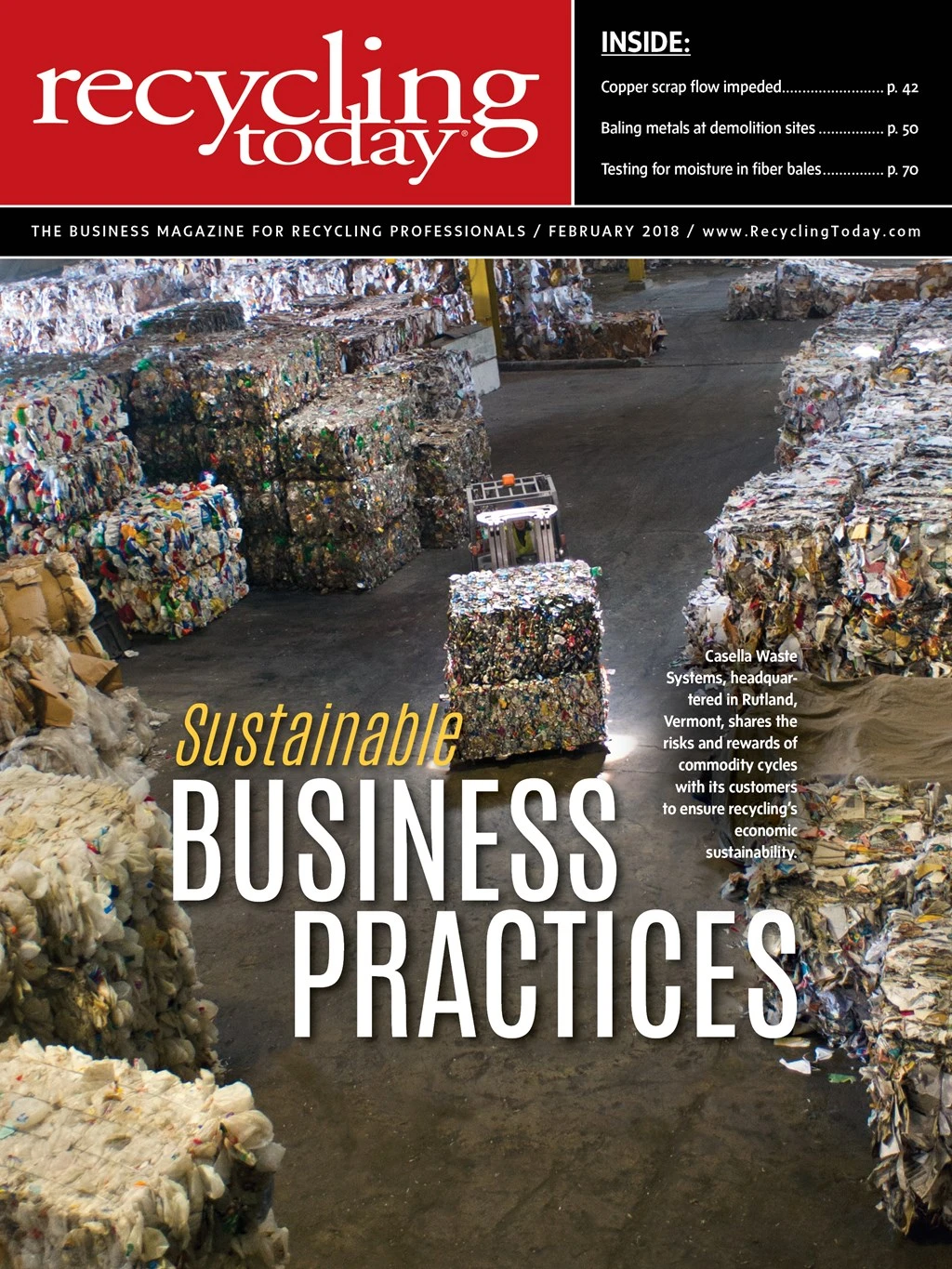Throughout the second half of 2017, China was at the root of much of the recovered fiber industry’s confusion, disruptions
He notes that China, which has slowed its buying of U.S. secondary paper, “said enough is enough” and has instead started buying presumably cleaner scrap paper from other countries, including Japan.
He and other sources point to single-stream residential collection programs as being behind high contamination rates in American scrap paper.

“China is not shutting off Japan from sending paper because they have source-separated recyclables,” the executive says. “It’s really clean; they keep paper separated from the glass.”
A broker based in the Boston area also recognizes that the quality of recovered fiber shipped from the U.S. in recent years “was not as good as it used to be, and this was caused by the growth of single-stream recycling.”
Yet, he adds, “China has to remember they are purchasing a secondary fiber and not pulp.”
Besides contamination concerns, sources say freight rates have gone through the roof.
A Midwest-based trader says the hike in freight rates is a result of new regulations for electronic monitoring that truck drivers are expected to use to track hours of service. The high costs associated with the regulations and lack of available trucks are threats to moving recovered fiber, he says.
“Mom and pop [trucking companies] don’t want to spend the money and be regulated, so the amount of trucks available has gone way down, and rates are going through the roof,” the trader says.

In addition to these new regulations, the OCC recycler on the East Coast says the transportation issue stems from the ongoing shortage in truck drivers as well as the demand for trucks after the hurricanes struck in the South. “That caused a big bubble in the marketplace and a big shortage of trucks, and the country hasn’t recovered from that,” he says of the aftermath of the hurricanes.
Freight rates have doubled and tripled in some cases in January, the executive on the East Coast says. “If you’re shipping freight, a year ago it may have been $400 for a trailer load of recycled paper. Now, it’s $700, $800, $900 for that same distance, that same lane, and it’s causing havoc in the industry and raising everyone’s cost.”
With rising costs, the sector saw a drop last year in recovered paper prices. The ISRI (Institute of Scrap Recycling Industries) Index, a weighted average of domestic ferrous scrap, nonferrous scrap and recovered paper prices, ended 2017 up 12 percent compared with the end of 2016, according to ISRI’s Jan. 8, 2018, “Weekly Market Report” email. Gains in ferrous and copper scrap outweighed a 23 percent drop in average recovered paper prices relative to the end of 2016, according to the index.
Domestically, recovered paper prices in January remained mostly flat from the prior month, according to the Jan. 5 PPW Yellow Sheet from RISI, Boston. Sorted residential paper and news (SRPN) saw a $10 drop on the West Coast.
Mixed paper sold for an average of $29.45 per ton in January, the same as in December 2017. The Midwest-based trader says, “Mixed paper is so cheap right now, and nobody can get rid of it.”
Countries, including India, Indonesia, Malaysia, Korea and Vietnam, have bought more U.S. mixed paper. Still, they do not have anywhere near the capacity of China. “All of those countries combined do not come close to what China was doing,” says the corrugated executive.

Explore the February 2018 Issue
Check out more from this issue and find your next story to read.
Latest from Recycling Today
- Orion ramping up Rocky Mountain Steel rail line
- Proposed bill would provide ‘regulatory clarity’ for chemical recycling
- Alberta Ag-Plastic pilot program continues, expands with renewed funding
- ReMA urges open intra-North American scrap trade
- Axium awarded by regional organization
- Update: China to introduce steel export quotas
- Thyssenkrupp idles capacity in Europe
- Phoenix Technologies closes Ohio rPET facility





